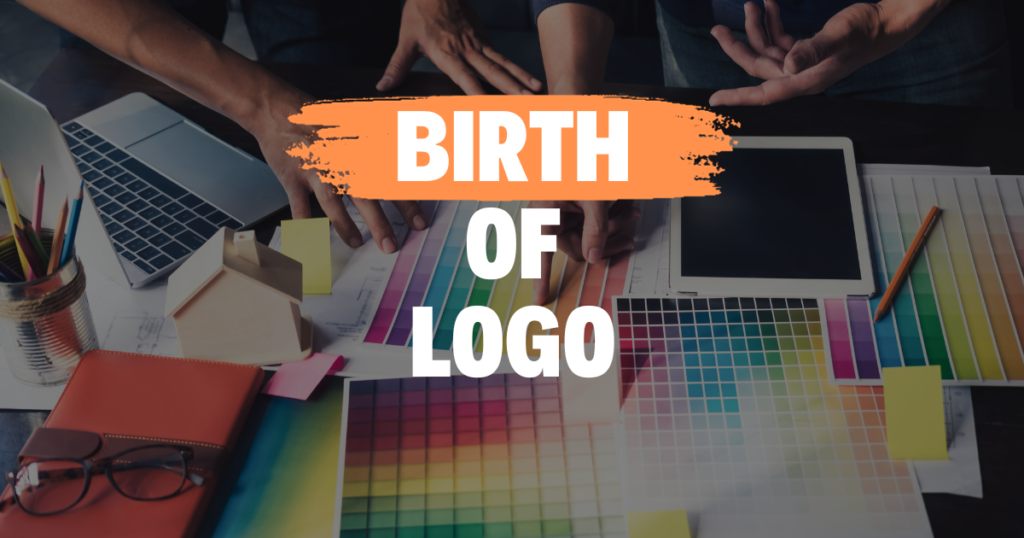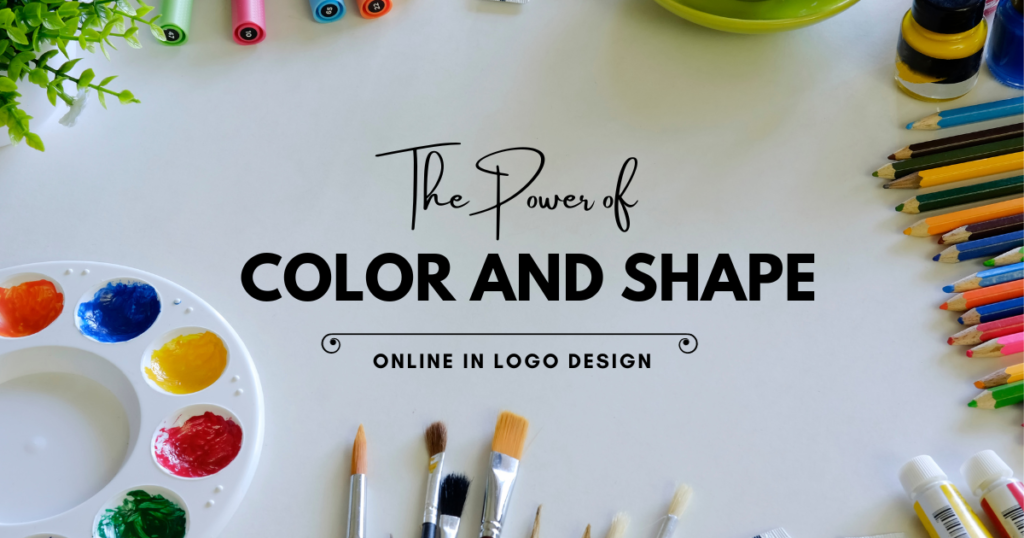
Logos are more than mere symbols. They are the gateway to a brand’s soul, the silent communicators of a company’s ethos, and the visual anchors that tether consumers to brands. Just as the universe has its mysteries, complexities, and stories, so does the world of logo design. This journey into the Brand Village’s Logo Design Universe is an invitation to discover the secrets, strategies, and stories behind these visual masterpieces. For many of us, it’s the logo. The emblem that represents the essence of the brand. But have you ever wondered about the universe behind these logos? Must visit Let’s take a journey together into the Brand Village’s Logo Design Universe.
The Birth of a Logo

A logo, often perceived as a simple emblem, has a genesis rooted in profound creativity, research, and strategy. Its birth is an intricate dance between art and science, emotions and analytics. Let’s embark on the captivating journey of how a logo is born.
Understanding the Brand
The genesis of every great logo begins with a deep understanding of the brand it represents. This involves thorough research into the brand’s history, values, mission, and vision. What does the brand stand for? Who are its target audiences? What emotions does it wish to evoke? The answers to these questions lay the first bricks of the logo’s foundation.
Inspiration Gathering
Drawing inspiration is the next step. Designers often look towards nature, art, cultures, and even personal experiences. Mood boards come alive with color palettes, sketches, typefaces, and design elements that resonate with the brand’s essence. This phase is all about letting creativity run wild while keeping the brand’s core intact.
Sketching and Conceptualization
With a reservoir of inspiration at their disposal, designers begin sketching. Initial drafts, often hand-drawn, capture the raw emotion and essence of the brand. Numerous sketches are created, each presenting a unique perspective and approach.
Digital Transformation
The promising sketches are then transformed into digital designs. Advanced software tools allow designers to refine lines, play with colors, and experiment with typography. This phase gives life to the logo, making it adaptable and scalable across various platforms.
Feedback and Iterations
No logo is born perfect. It undergoes multiple iterations based on feedback from brand stakeholders, fellow designers, and potential audiences. This iterative process ensures that the logo aligns perfectly with the brand’s goals and resonates with its target demographics.
Finalization and Testing
Is it recognizable in smaller dimensions? Does it maintain its essence across various platforms, from billboards to mobile screens? This testing phase ensures the logo’s versatility and longevity.
Storytelling
Every logo has a story, a narrative that explains its elements. Whether it’s the symbolism behind a color choice or the inspiration for a particular design element, this story adds depth to the logo. Crafting this narrative is vital as it helps the brand’s stakeholders and audiences connect with the logo on an emotional level.
Release and Reception
The final step in the birth of a logo is its release into the real world. It graces the brand’s touchpoints, from websites and business cards to products and advertisements. The reception it receives, the emotions it evokes, and the recognition it garners mark the culmination of its birthing journey.
In Summary
In essence, the birth of a logo is a meticulous process filled with passion, creativity, and strategy. It’s a journey that transforms abstract brand values into tangible visual elements, creating a symbol that becomes the brand’s identity for years to come.
The Elements of a Stellar Logo
Simplicity
The beauty of a memorable logo often resides in its simplicity. Just as a clear night sky allows stars to shine brightest, a simple design ensures that the brand’s essence is conveyed without distraction. Iconic logos like Apple, Nike, or McDonald’s owe their universal recognition to uncomplicated, easily digestible designs.
Relevance
Similarly, a logo for a tech startup would vastly differ from that of a vintage cafe. It’s about ensuring that the design aligns with the brand’s values, mission, and the expectations of its audience.
Distinctiveness
In the vast sea of branding, distinctiveness is the lighthouse that helps a brand stand out. A logo should possess unique elements that set it apart from its competitors, ensuring instant recognizability. Remember, it’s these nuances that often become the signature of a brand, much like a personal fingerprint.
Versatility
In today’s digital age, a logo will be displayed across various platforms, from business cards and stationery to websites and social media banners. Hence, its design should be versatile, ensuring consistency and adaptability across diverse mediums. Think of it as water – whether in a glass, bottle, or lake, its essence remains unchanged.
Timelessness
Design trends come and go, but a stellar logo remains eternally relevant. What gives a logo this timeless quality? It’s the perfect blend of simplicity, relevance, and a deep-rooted connection with its audience. Brands like Coca-Cola or Ford are testament to this, sporting logos that have elegantly weathered the sands of time.
Emotional Resonance
Every impactful logo resonates emotionally with its audience. This resonance could evoke feelings of trust, nostalgia, aspiration, or even joy. For instance, Disney’s logo, with its fairy-tale castle, often stirs feelings of childhood wonder and magic.
Memorable Design
Memory plays a crucial role in branding. A logo should be designed in a manner that, after seeing it once or twice, it etches itself into the viewer’s memory. This ensures that when a consumer thinks of a product or service category, that particular brand springs to mind.
Balance and Proportion
Like a well-composed photograph or a harmonious piece of music, logos need balance. The use of space, symmetry, and proportion play a pivotal role in creating an aesthetically pleasing design. This equilibrium ensures that no part of the logo overshadows another, creating a harmonious visual experience.
Adaptability to Trends
While timelessness is key, adaptability to subtle design trends can keep a logo looking fresh. This doesn’t mean a complete redesign with every passing trend but incorporating elements that make the logo feel contemporary.
Storytelling
The best logos tell a story. Whether it’s the arrow in Amazon’s logo, signifying A to Z products, or the hidden bicycle in the Tour de France logo, a subtle narrative element can add depth and intrigue to a design.
The Power of Color and Shape in Logo Design

When we think about logos, our minds often visualize iconic symbols and unique typography. However, the unsung heroes of effective logo design lie in the strategic use of color and shape. These elements play a pivotal role in how a brand communicates its identity, values, and emotions. Let’s delve deeper into their significance.
The Emotional Spectrum of Colors
Colors have the innate power to evoke a spectrum of emotions. They communicate feelings and set the tone for a brand’s identity. Here’s a breakdown of what some key colors traditionally convey:
Red: Passion, energy, urgency. Think of the urgency in the ‘SALE’ signs or the passion of brands like Coca-Cola.
Blue: Trust, calmness, professionalism. Notice the blues in tech companies like Facebook or financial institutions like Chase Bank, signaling trust and stability.
Green: Growth, nature, health. Brands like Whole Foods and John Deere employ green to emphasize organic quality and growth.
Yellow: Optimism, warmth, clarity. Just like the sunshine, yellow radiates positivity, a sentiment captured by brands like Nikon.
Purple: Royalty, mystery, luxury. Brands like Cadbury and Hallmark employ purple to exude a luxurious, regal feel.
Shapes and Their Subconscious Impact
Just as colors speak to our emotions, shapes converse with our subconscious, sending covert messages about a brand. Here’s a closer look:
Circles: Represent unity, totality, and infinity. They’re often used to convey community, love, and partnership. Consider the unified rings of the Olympic logo or the community feel of the Target logo.
Squares and Rectangles: Convey stability, balance, and trust. Think of the solid foundation of a building. Brands like Microsoft use squares to convey reliability and stability.
Triangles: Symbolize power, progression, and purpose. They can point upwards, signaling growth (like in the Adidas logo) or downwards, indicating stability.
Spirals: Denote growth, evolution, and creativity. Their dynamic nature is reminiscent of galaxies and DNA helixes, signaling a continuous evolution.
Organic Shapes: These are irregular and uneven, often used to represent natural elements. Brands aiming for a more humanistic, organic feel might employ such shapes, as seen in the Starbucks mermaid or Apple’s bitten apple logo.
Color and Shape Synergy
When colors and shapes come together, magic happens. It’s the harmonious blend of the emotion from colors and the subconscious messaging of shapes that create a compelling visual story. For instance, a blue circle might symbolize a unified, trustworthy community, while a red triangle can indicate a passionate, upward trajectory.
The Cultural Lens
While colors and shapes have general meanings, it’s essential to view them through cultural lenses. What’s auspicious or trustworthy in one culture might convey a different emotion in another. For instance, while white symbolizes purity in Western cultures, it’s often associated with mourning in many Eastern cultures. Brands looking to have a global presence need to be acutely aware of these nuances.
Evolution with Time
Just as fashion and music evolve, the interpretation and trends of colors and shapes change over time. What’s contemporary today might seem dated in a decade. However, the core emotional and psychological connection remains fairly consistent. Brands often subtly tweak their logos to stay modern while retaining their essence.
In Summary
In essence, while logos might seem like simple graphics at first glance, they are meticulously crafted amalgamations of color and shape, each element meticulously chosen to convey the brand’s heart and soul. Understanding the power of these elements elevates our appreciation for the art and science behind logo design.
Beyond the Design: The Logo’s Journey
While the aesthetic appeal of a logo is undeniably crucial, what truly breathes life into it is its journey post-design. A logo isn’t merely an art piece; it’s the ambassador of a brand, embarking on a journey filled with narratives, interactions, and evolutions. Let’s explore the path a logo takes once it moves beyond the confines of the design board.
Integration Across Platforms
Once finalized, a logo doesn’t just sit pretty on a website’s header. It integrates itself across multiple platforms, each serving as a touchpoint for potential consumers. From social media profiles, marketing collaterals, and merchandise to offline spaces like storefronts, business cards, and packaging, the logo finds a home everywhere. This omnipresence ensures consistent brand identity and recall.
Evolving with Brand Narratives
A logo might be static in design, but its meaning and resonance evolve with every brand story told. Whether it’s a groundbreaking product launch, a heartfelt CSR initiative, or even a brand crisis, the logo witnesses it all. With each narrative, it gathers more depth, becoming a repository of the brand’s history and ethos.
Audience Interactions
The true test of a logo’s mettle lies in its interactions with the audience. Every time a consumer wears merchandise flaunting the logo or shares a branded post online, they’re endorsing the brand, amplifying its reach and influence. These endorsements, whether through word-of-mouth or digital shares, elevate the logo from a mere design to a symbol of trust and community.
Periodic Revamps
Just as we occasionally update our wardrobes or renovate our homes, logos too undergo revamps. These aren’t just to keep up with design trends but also to reflect brand growth, expansion, or evolution. For instance, a startup that began with a fun, quirky logo might opt for a more mature design as it grows into a market leader. These revamps, subtle or significant, mark milestones in the logo’s journey.
Cultural Adaptations
For brands with a global footprint, the logo embarks on a multicultural journey. It adapts to resonate with diverse audiences, respecting cultural nuances and sentiments. These adaptations can range from color tweaks to complete redesigns, ensuring the brand’s essence remains universally relatable.
Legacy Building
Over time, as the brand carves a niche for itself, the logo transcends its original design intent. It becomes a legacy symbol, representing not just products or services but generations of trust, innovation, and excellence. Such logos, like those of Apple or Nike, are no longer just brand identifiers; they’re cultural icons.
The Challenges Faced
It’s not always smooth sailing for a logo. It faces challenges like brand controversies, design plagiarism, or even misinterpretations. How a brand navigates these challenges, supporting its logo, determines the logo’s resilience and enduring appeal.
Conclusion for Journey
In conclusion, while the design phase lays the foundation, it’s the journey post-design that truly defines a logo’s legacy. It’s this journey, filled with stories, challenges, evolutions, and interactions, that transforms a logo from a mere graphic to a symbol etched in the annals of branding history.
Conclusion: The Universe in a Symbol
A logo might appear as a mere design, but delve deeper and you’ll uncover a universe of thought, strategy, and creativity. As we’ve seen, the journey from an abstract idea to an iconic symbol is both complex and captivating. In our exploration, we’ve unveiled the rich tapestry of thought, emotion, and strategy that goes into crafting a logo. Each logo, regardless of its simplicity, holds within it a universe of stories, much like a single star amidst the vast cosmos. By understanding this, we gain a deeper appreciation for these seemingly simple symbols and the pivotal role they play in the grand narrative of branding.
FAQs
1.What is the primary purpose of a logo?
A logo serves as a visual representation of a brand, encapsulating its essence and values in a design.
2.How important is color in logo design?
Extremely important. Colors can evoke emotions and play a pivotal role in brand perception.
3.Why do some brands change their logos?
Brands evolve, and so do their logos. Changing logos can reflect a company’s growth, new direction, or rebranding efforts.
4.Can a logo really impact a brand’s success?
Absolutely. A well-designed logo can enhance brand recognition, trust, and loyalty among consumers.
5.What makes a logo timeless?
A combination of simplicity, relevance, and resonance with the target audience ensures a logo remains iconic over the years.






Leave a Reply